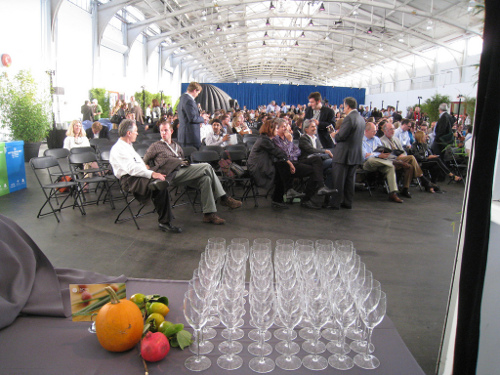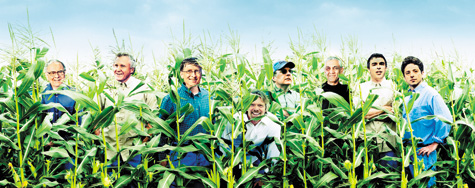Even a year gone since the failure of Lehman, fundamental questions remain regarding the core underlying assumptions of our financial system. Though currently derivatives trading and black boxes appear out of favour, what will replace them in terms of helpful and productive uses of capital still has yet to be determined. This question was what the Conference on Social Capital Market’s, or SoCap09 tried to give some structure to; while the trend towards sustainable investments and long-term ROI seems to have taken the place of actively managed funds seeking 20x returns.
So what does this world presently look like? For one, It is not as easy to quantify as the Deloitte’s of the world would want it to be. In fact, Christopher Park from the company referred to standard accounting metrics as “a warm blanket” when compared with the confused and nascent metrics which provide assessment in this space. Secondly, these markets are not as tested as traditional investment options. The oldest of these players, Calvert Foundation has only been around for ten years in it’s current form. The new-kid-on-the-block-phenomenon is both Social Capital’s largest asset, since apparently Wall Street pre-2008 logic wasn’t exactly perfect, as well as being it’s biggest challenge. Though the perception of Social Capital investments as a novelty, coupled with a palpable unfamiliarity with the valuations make this space seem unlikely to attract traditional capital, maybe ‘Social Investing’ is just a new word for a very old idea.
From the start of capitalism there have been players whose goals were multiple. From the massive endowments of the Rockerfellers and Carnegies to the educational scholarships committed by what today are called ‘high net-worth individuals.’ These acts of philanthropy were the yin to the yang of free-market capitalism. The question now is whether metrics and forcastable, and market-rate ROI can be properly delivered by such investments. Fittingly, Rockerfeller Foundation and Deliotte among others are behind the current push to bring the metrics of high finance down into the social sphere. One such project, called IRIS for ‘Impact Reporting and Investing Standard’s’ goal is to set agreeable metrics so comparing between these investments will be simpler. These metrics will require reporting of data such as: job’s created, revenue, etc., and are the underlying piece to developing the GIIRS, or ‘Global Impact Investing Rating System’, which will be similar to rating agencies in other asset classes. These new elements will undoubtedly smooth the road between capital and investments, if only just through the process itself introducing these actors to one another. There will have to be strong deliberative processes since the space constitutes of everyone from hedge funds to single social entrepreneurs.
While metrics and ratings are one solution to the problem of moving capital into the social sphere, other problems remain. One refrain at the conference was that investors feel comfortable either maximizing their investment returns or giving away money to charity. Oddly enough investors who were asked to invest in these blended value products had so much difficulty bridging these two worlds that they often wanted to offer the money as a charitable donation. Though there are some reasons for making donations above proper investments due to tax laws, by-in-large this kind of response is nonsensical. Social funds not only infuse money towards inherently sustainable models, which need seed or growth funds, but they can often provide returns on the investments which in some cases exceed market-rate.
To combat this cultural wall, members of the Social Capitorati made the case that in order to attract capital, would-be ambassadors must use only the language of traditional finance. Jed Emerson of Uruhu Capital, who hasespoused such social investments for many years discussed how at his fund he only speaks in phrases like ‘risk management’ and ‘qualitative assessment’ which, while they might seem euphemistic, could succeed in bringing down the barriers present for capital infusion into the space.
What is unclear still is how these investments will fit into the traditional investment paradigm-if they eventually are seen as being reasonable options for investors. One way to frame this comes from Skoll Foundation’s Dan Chrisafulli, who said that small and medium enterprises are “durable assets which are very good as part of a blended portfolio.” This seems to be the view of many with regard to the micro-finance space already. What was said as a goal for the sector at the conference is an eventual infusion of between 5 and 15 percent of total assets under management. My question is, what are the distinct borders of the space? As companies large and small begin to analyze more of their unintended consequences, and non-profits find that relying on grants limits their growth possibilities, aren’t we all moving closer to the middle by default?
Lastly, more capital will not mean that social entrepreneurs will have any less challenges- quite the contrary. Just as venture capital creates a few winners (in the neighborhood of ten percent of funded companies really find those 20x returns which fuel the industry), so too will social ventures find challenges along the road to high impact. Juggling multiple goals makes reaching each one infinitely more complex, and without the simplicity of singular attention on profits, running either a business or social enterprises now will be a much more multifaceted endeavor. This hearkens true for the supply-side of capital as well. While old investments really could boil down to ROI over the short-term, liabilities are everywhere for companies making an impact ( which is inherently larger at scale). The days of only focusing on the bottom line are done. The flip side is that we are no longer living in a bifurcated world where money and meaning are painted as mutually exclusive. While definitions of value will have to become hammered out through intense deliberative processes, only two eventualities could possibly exist: either irreconcilable challenges will emerge, or reasonable fusions are going to be found.
One thing is sure, when the convener of the conference Kevin Jones called Social Markets “the intersection of money and meaning” a year ago at the first SoCap conference, a nebulous middle-path emerged which could-with enough work-make the science of economics just a little less dismal.
Image courtesy Flikr user Sociate via creative commons licensing.






The up-side to this down-turn is the oportunity to rethink of our values. Our future depends on our being able to adapt to a changing world – it’s what got us though other challenges, both environmental and economic. We’ve been living in a rather false world for some time now. We cannot escape the necessity of change. Our business model must be rethought. We can no longer afford to ignore our invironment for the sake of the bottom-line.
The up-side to this down-turn is the oportunity to rethink of our values. Our future depends on our being able to adapt to a changing world – it’s what got us though other challenges, both environmental and economic. We’ve been living in a rather false world for some time now. We cannot escape the necessity of change. Our business model must be rethought. We can no longer afford to ignore our invironment for the sake of the bottom-line.